8th Air Force 233 BIG WEEK - DAY 5
24 February 1944
AAM
Object Number - FRE 4752 - Doc Agnew, Staff Sergeant Joe Roundhill and personnel of the 379th Bomb Group transfer the body of Sergeant Noonan (killed by a flak) from a B-17...
Description
BIG WEEK resumes with full intensity against the German aircraft industry. Bomber tactics are changed slightly in that each Air Division will be directed at more widely dispersed primary targets which it is thought will frustrate concentration Luftwaffe fighter defenses. The aircraft industries at Rostoc in northern Germany will be one of the primary targets and because of their geographic location this formation will not receive fighter support all the way to the target and return. The ball bearing factories at Schweinfurt and the aircraft factories at Gotha are the other two primary targets which, hopefully, will draw away Luftwaffe fighter opposition from the force attacking at Rostock, Germany. Mission Summary follows:
3rd Air Division: 304 B-17s from: 94BG; 95BG; 96BG; 100BG; 385BG; 388BG; 390BG; 447BG; and 452BG are despatched to bomb the aircraft industries and other Targets of Opportunity (TOs) at Rostock, Germany. The primary targets were the aircraft industries at Tutow, Posen and Kreisling, but an accidental release by Pathfinder aircraft cause 61 aircraft to drop early before reaching the target. 295 aircraft are effective on targets in and around Rostock. 5 aircraft Failed to Return (FTR) - 13 KIA 26 POW (1 DIC) 10 INT (in Sweden). 60 aircraft are damaged. The bomber gunners of this element claim 23-11-5 of attacking German aircraft. There are no other losses or casualties.
1st Air Division: A combined force of 266 B-17s from: 91BG; 92BG; 303BG; 305BG; 306BG; 351BG; 379BG; 318BG; 384BG; 401BG; 457BG; and 482BG are despatched to bomb the ball bearing factories at Schweinfurt, Germany. This element gets good P-51 fighter escort to and from the target and German fighter opposition is light. 238 aircraft are effective on the target. 11 aircraft Failed to Return (FTR) - 36 KIA 68 POW. 160 aircraft are damaged. 2 airmen are KIA and 5 were WIA in Returning aircraft. The bomber gunners of this element claim 10-1-7 of attacking German aircraft .
2nd Air Division: 239 B-24s from: 44BG; 93BG; 389BG; 392BG; 445BG; 446BG; 448BG; and 453BG are despatched to bomb the primary target of the German aircraft industry at Gotha, Germany. Fighter opposition is heavy despite good escort from P-51 Fighter Groups and 8th Air Force takes another heavy loss of bomber crews. 169 aircraft are effective at Gotha; 44 others bomb Eisenach when the Lead Bombardier, suffering from anoxia, mistakes Eisenach for the primary. 33 aircraft Failed to Return (FTR) - 126 KIA 194 POW (1 DIC) 1 EVD. 1 aircraft with battle damage is Damaged Beyond Repair (DBR) in a crash landing upon return - 1 KIA 9 RTD. 28 aircraft are damaged. 3 airmen are KIA and another 6 WIA in returning aircraft. The bomber gunners of this element claim 50-10-20 (probably exaggerated) of attacking German aircraft.
Mission Details
EISENACH (Opportunistic)
Description: AIRCRAFT FACTORIES
Notes: The lead bombardier from 2nd Bomb Division suffered from anoxia due to a faulty oxygen mask and mistook Eienach as the primary target and 43 other B-24s released on his mistake.
Mission Statistics
- Tonnage Dropped: 116.00
- Aircraft sent: 44
- Aircraft effective: 44
GOTHA (Primary)
Description: AIRCRAFT FACTORIES
Aircraft Type: B-24 Liberator
Notes: The 458th Bomb Group flies their first mission. The lead bombardier from 2nd Bomb Division suffered from anoxia due to a faulty oxygen mask and mistook Eienach as the primary target and 43 other B-24s released on his mistake.

- Unit Hierarchy: Group
- Air Force: Eighth Air Force
- Type Category: Bombardment

- Unit Hierarchy: Group
- Air Force: Eighth Air Force
- Type Category: Bombardment
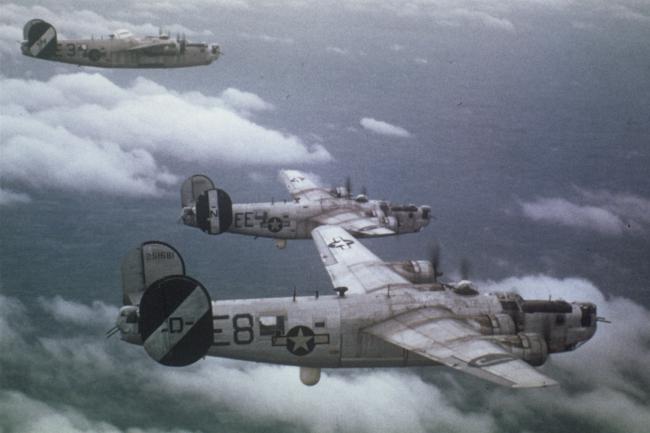
- Unit Hierarchy: Group
- Air Force: Eighth Air Force
- Type Category: Bombardment

- Unit Hierarchy: Group
- Air Force: Eighth Air Force
- Type Category: Bombardment

- Unit Hierarchy: Group
- Air Force: Eighth Air Force
- Type Category: Bombardment
Mission Statistics
- Tonnage Dropped: 372.00
- People killed in action: 130
- People wounded in action: 6
- People evaded: 1
- Prisoners of war: 194
- People died in captivity: 1
- People returned to duty: 9
- Enemy aircrafts destroyed by bomber: 50
- Enemy aircrafts probably destroyed by bomber: 10
- Enemy aircraft damaged by bomber: 20
- Aircraft sent: 195
- Aircraft effective: 169
- Aircraft missing in action: 33
- Aircraft damaged beyond repair: 1
- Aircraft damaged: 28
Description: AIRCRAFT FACTORIES
Notes: It has not been determined which Groups from 3rd Bomb Division attacked this target.
Mission Statistics
- Tonnage Dropped: Not determined
POZNAN (Primary)
Description: AIRCRAFT FACTORIES
Aircraft Type: B-17 Flying Fortress
Notes: There is no fighter support for this element. The 388th Bomb Group dispatches 35 aircraft to Poznan, two abort and one is lost, 32 strike the target using Pathfinder (PFF). The 390th Bomb Group also has Poznan as the primary target and dispatches 42 but 6 abort, when they reach Poznan, cloud cover prevents bombing and the Group hits the secondary of Rostock with 36. No losses.
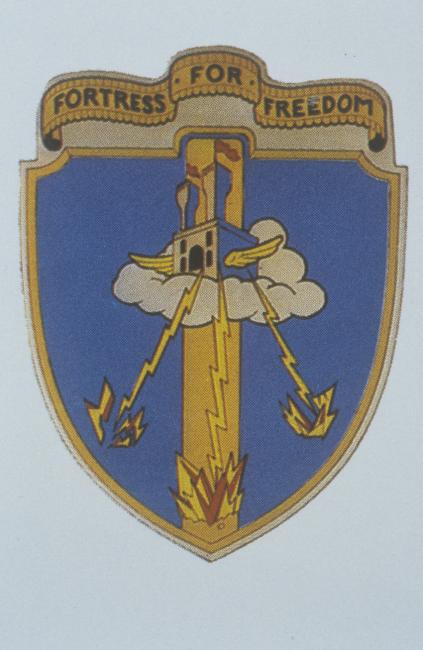
- Unit Hierarchy: Group
- Air Force: Eighth Air Force
- Type Category: Bombardment

- Unit Hierarchy: Group
- Air Force: Eighth Air Force
- Type Category: Bombardment
Mission Statistics
- Tonnage Dropped: 74.30
- Aircraft sent: 77
- Aircraft effective: 32
ROSTOCK (Opportunistic)
Description: AIRCRAFT FACTORIES
Aircraft Type: B-17 Flying Fortress
Notes: There is no fighter support for this element. Most groups bomb Rostock as the primary target.
![Three airmen of the 100th Bomb Group, Lieutenant Kenneth Menzie, Lieutenant Donald Strout and Lieutenant Norman Scott, plan the route they will take during the next mission in their B-17 Flying Fortress (serial number 42-30380). Image stamped on reverse: 'Reviewed and passed U.S. Army 23 Aug 1943 Press Censor E.T.O. U.S.A.' [stamp]'. Passed for publication 23 August 1943 INTLD 16 General Section Press Censorship Bureau '[stamp], 'Associated Press' [stamp] and '280035.' [Censor no.] Printed caption on reve](https://assets.americanairmuseum.com/s3fs-public/styles/max_650x650/public/freeman/media-378743.jpg?itok=oPPVVi6c)
- Unit Hierarchy: Group
- Air Force: Eighth Air Force
- Type Category: Bombardment
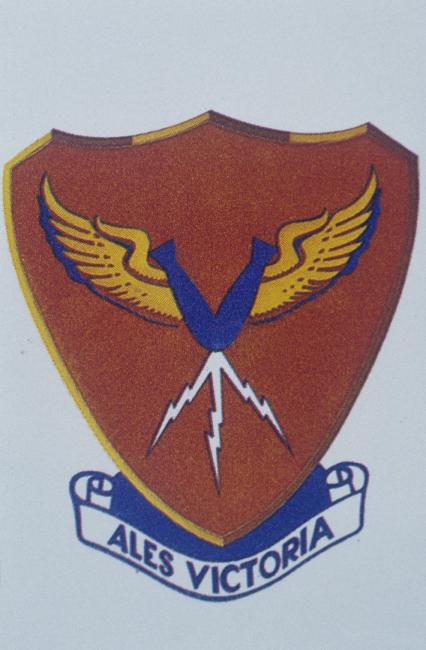
- Unit Hierarchy: Group
- Air Force: Eighth Air Force
- Type Category: Bombardment

- Unit Hierarchy: Group
- Air Force: Eighth Air Force
- Type Category: Bombardment

- Unit Hierarchy: Group
- Air Force: Eighth Air Force
- Type Category: Bombardment
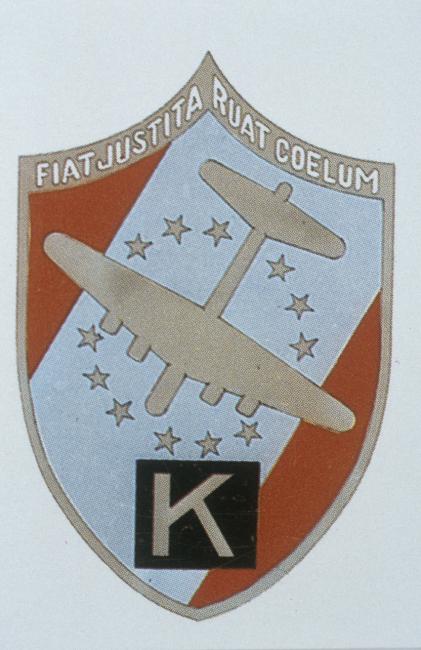
- Unit Hierarchy: Group
- Air Force: Eighth Air Force
- Type Category: Bombardment
Mission Statistics
- Tonnage Dropped: 610.69
- People killed in action: 13
- People wounded in action: 8
- Prisoners of war: 26
- People died in captivity: 1
- People interned: 10
- Enemy aircrafts destroyed by bomber: 23
- Enemy aircrafts probably destroyed by bomber: 11
- Enemy aircraft damaged by bomber: 15
- Aircraft sent: 227
- Aircraft effective: 263
- Aircraft missing in action: 5
- Aircraft damaged: 60
SCHWEINFURT (Primary)
Description: BALL BEARING FACTORIES
Aircraft Type: B-17 Flying Fortress
Notes: This is a really a diversion to tie up Luftwaffe units from attacking 3rd Bomb Division element as the head for aircraft industry targets at Gotha, Poznan, Rostoc and Eisenach. They also drop 3,976,000 leaflets. 457th BG MISSION NO. 3 - SCHWEINFURT, GERMANY 24 FEBRUARY 1944 The Eighth Air Force spread its three Air Divisions to lessen the possibility of a massive air battle in a concentrated area. The ball bearing plants at Schweinfurt were the assigned targets forthe 1st AirDivision. Major Henty B. Wilson led the high box of the 94th Combat Wing and Lt. Albert L. Sikkenga was pilot. Schweinfurt and its Ball Bearing Works, having been the target of previous Eighth Air Force missions, had become a familiar name to bomber crews. The 457th dispatched eighteen aircraft on the mission. As the Group neared the target area, the town could be seen burning in the distance. When the Initial Point (IP) was reached, with the 457th last over the target, the bomb bay doors of the lead ship would not open. The signal was given to the Deputy Lead to take over the formation. Engine trouble then developed in the lead ship, which veered sharply to the left, temporarily out of control, and the aircraft was followed by the formation, unaware that the Deputy Lead had taken over. The Group Lead managed to make a run on another part ofthe target area using a different aiming point. The bombs hit a widely scattered area around the arbitrary aiming point. As would be expected, Schweinfurt lived up to its reputation and enimy resistance was fierce, both by flak and by fighters. The 457th lost one plane, piloted by Lt. Max , over the target. The craft took a flak hit that disabled engines No. 1 and 2, and No. 3 and 4 engines ran away and could not be feathered. The navigator, Lt. Darren McIntyre, was seriously injured and the right waist gunner, Sgt. Italo Stella, was killed at his station. The decision was made to crash land the craft in an attempt to better afford the navigator the opportunity to receive medical aid and survive. Lt. Morrow successfully crash landed the craft. In a matter of minutes the dead and wounded were removed from the airplane, and the crew completely surrounded by German civilians who had encircled the area. A short time later two German officers, presumably Gestapo, arrived, took charge, and transported the crew to an interrogation center. The survivors of the crew were prisoners of war until liberated in May 1945. Lt. McIntyre later succumbed to his wounds. Another plane returned with one dead crewman, Sgt. H. R. Pike, a victim of the enemy's fire power.

- Unit Hierarchy: Group
- Air Force: Eighth Air Force
- Type Category: Bombardment

- Unit Hierarchy: Group
- Air Force: Eighth Air Force
- Type Category: Bombardment

- Unit Hierarchy: Group
- Air Force: Eighth Air Force
- Type Category: Bombardment

- Unit Hierarchy: Group
- Air Force: Eighth Air Force
- Type Category: Bombardment
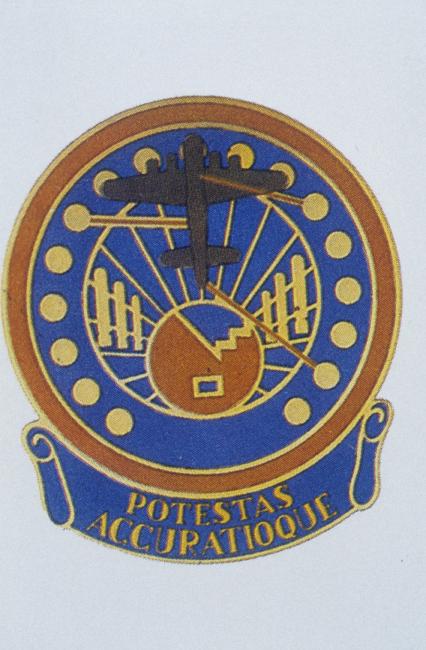
- Unit Hierarchy: Group
- Air Force: Eighth Air Force
- Type Category: Bombardment
Mission Statistics
- Tonnage Dropped: 573.00
- People killed in action: 38
- People wounded in action: 5
- Prisoners of war: 68
- Enemy aircrafts destroyed by bomber: 10
- Enemy aircrafts probably destroyed by bomber: 1
- Enemy aircraft damaged by bomber: 7
- Aircraft sent: 266
- Aircraft effective: 238
- Aircraft missing in action: 11
- Aircraft damaged beyond repair: 1
- Aircraft damaged: 160
Description: AIRCRAFT FACTORIES
Notes: It has not been determined which Groups from 3rd Bomb Division attacked this target.
Mission Statistics
- Tonnage Dropped: Not determined
Connections
See how this entry relates to other items in the archive by exploring the connections below.
People
- Military/Civilian/Mascot: Military
- Nationality: American
- Unit: 384th Bomb Group 544th Bomb Squadron
- Service Numbers: O-798297
- Highest Rank: First Lieutenant
- Role/Job: Pilot
- Military/Civilian/Mascot: Military
- Nationality: American
- Unit: 384th Bomb Group 547th Bomb Squadron
- Service Numbers: 16006483
- Highest Rank: Technical Sergeant
- Role/Job: Top Turret Gunner
- Military/Civilian/Mascot: Military
- Nationality: American
- Unit: 445th Bomb Group 703rd Bomb Squadron
- Service Numbers: 39543116
- Highest Rank: Technical Sergeant
- Role/Job: Top Turret Gunner
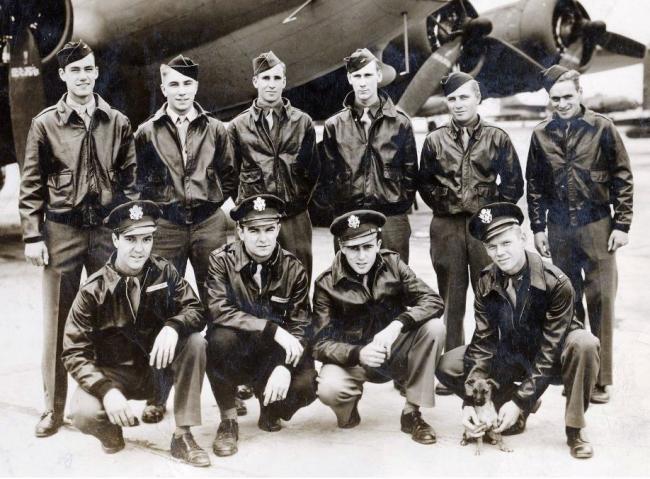
- Military/Civilian/Mascot: Military
- Nationality: American
- Unit: 95th Bomb Group 412th Bomb Squadron
- Service Numbers: 18193418
- Highest Rank: Technical Sergeant
- Role/Job: Radio Operator
- Military/Civilian/Mascot: Military
- Nationality: American
- Unit: 95th Bomb Group 336th Bomb Squadron
- Service Numbers: 32549894
- Highest Rank: Technical Sergeant (2nd Grade)
- Role/Job: Radio Operator
Aircraft

- Aircraft Type: B-17 Flying Fortress
- Nicknames: The Duchess, Sure Stuff
- Unit: 303rd Bomb Group 359th Bomb Squadron

- Aircraft Type: B-17 Flying Fortress
- Nicknames: Problem Child : Old Reliable
- Unit: Base Air Depot 1 547th Bomb Squadron 384th Bomb Group 305th Bomb Group 367th Bomb Squadron

- Aircraft Type: B-17 Flying Fortress
- Nicknames: Knock-out Dropper
- Unit: 303rd Bomb Group 359th Bomb Squadron
- Aircraft Type: B-24 Liberator
- Unit: 445th Bomb Group 701st Bomb Squadron 703rd Bomb Squadron

- Aircraft Type: B-24 Liberator
- Nicknames: Suitch's Bitch
- Unit: 445th Bomb Group 700th Bomb Squadron
Revisions
Corrected a typo in the "Detailed description" - “which” was misspelled.
Lee Cunningham 10-Feb-2016. Added Bomber gunner claims on enemy aircraft to Schweifurt element statistics per "The Mighty Eighth War Dairy", Roger A. Freeman.
Lee Cunningham 10-Feb-2016. Added bomber gunner claims on enemy aircraft to Rostoc element statistics per "The Mighty Eighth War Diary", Roger A. Freeman.
Lee Cunningham 10-Feb-2016. Added bomber gunner claims on emeny aircraft to Gotha element statistics per "The Mighty Eighth War Dairy", Roger A. Freeman.
Lee Cunningham 10-Feb-2016. Added Mission Narrative based on "The Mighty Eighth War Diary", Roger A. Freeman and " Losses of the 8th & 9th Air Forces", Stan Bishop & John A. Hey MBE.
Lee Cunningham 10-Feb-2016. Added Mission Narrative per "The Mighty Eighth War Diary", Roger A. Freeman;
Mission detail added courtesy of Diane Reese - http://www.457thbombgroup.org/Narratives/MA3.HTML
Lee Cunningham, 8th Air Force missions research database / Stan Bishop's 'Losses of the US 8th and 9th Air Forces', the Combat Chronology of the US Army Air Forces and the work of Roger Freeman including the 'Mighty Eighth War Diary'.


